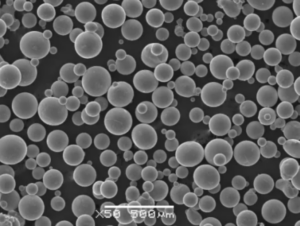Poudre de CoCrMoW-La poudre d'alliage cobalt-chrome-molybdène-tungstène est devenue un matériau très recherché dans des secteurs tels que l'aérospatiale, les implants médicaux et les systèmes mécaniques à haute performance. Grâce à ses propriétés mécaniques exceptionnelles et à sa résistance à l'usure, à la corrosion et à la chaleur, cette poudre métallique polyvalente est un élément essentiel dans toute une série de processus de fabrication avancés tels que la fabrication additive, le moulage par injection de métal et les revêtements par pulvérisation thermique.
Mais qu'est-ce qui distingue la poudre CoCrMoW ? Pourquoi est-elle un choix si populaire dans les environnements exigeants ? Si vous êtes curieux de connaître ses propriétés, ses applications et sa comparaison avec d'autres poudres, vous êtes au bon endroit.
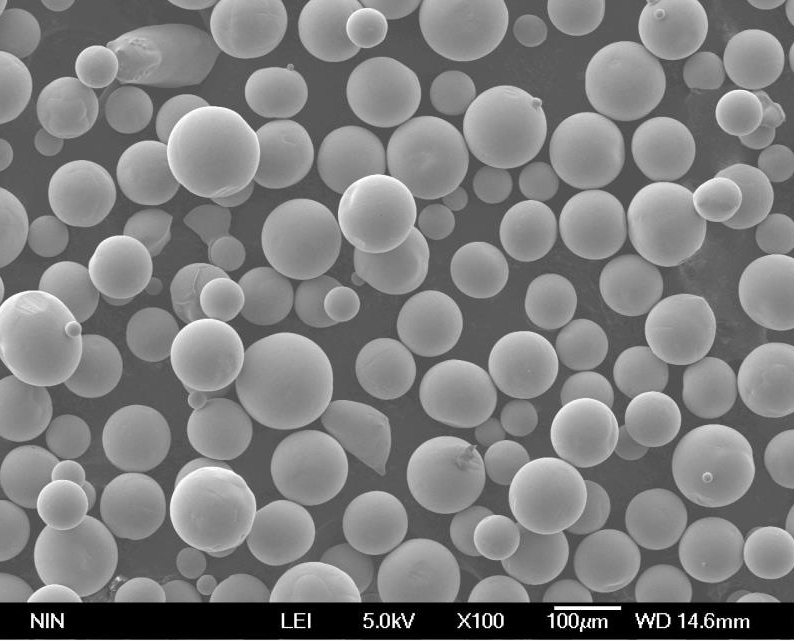
Aperçu de la poudre de CoCrMoW
Les poudres CoCrMoW appartiennent à une famille de superalliages composés principalement de cobalt, de chrome, de molybdène et de tungstène, conçus pour offrir une résistance exceptionnelle à l'usure, à la corrosion et aux températures élevées. Ces poudres sont couramment utilisées dans des applications critiques où les matériaux conventionnels peuvent s'avérer insuffisants en raison des conditions environnementales difficiles.
Dans cet article, nous allons nous pencher sur les différents types de poudre de CoCrMoW, leurs propriétés, leurs applications, ainsi que sur les avantages et les inconvénients de leur utilisation dans diverses industries. Nous aborderons également les principaux fournisseurs, les prix et les spécifications techniques.
Composition des Poudre de CoCrMoW
La composition des poudres CoCrMoW comprend généralement un mélange bien équilibré de cobalt (Co), de chrome (Cr), de molybdène (Mo) et de tungstène (W), avec des éléments d'alliage supplémentaires tels que le carbone, le silicium et le nickel pour améliorer certaines caractéristiques. La composition précise peut varier en fonction du type de poudre, mais le cobalt constitue la base de l'alliage.
Vous trouverez ci-dessous la composition d'une poudre typique de CoCrMoW :
| Élément | Composition typique (%) |
|---|---|
| Cobalt (Co) | 55-65% |
| Chrome (Cr) | 25-30% |
| Molybdène (Mo) | 5-10% |
| Tungstène (W) | 2-5% |
| Carbone (C) | 0.1-0.5% |
| Nickel (Ni) | 0-5% |
Principaux éléments d'alliage et leur rôle
- Cobalt (Co) : Il offre une excellente résistance à la corrosion et maintient la résistance de l'alliage à des températures élevées.
- Chrome (Cr) : Améliore la résistance à l'oxydation et la durabilité globale.
- Molybdène (Mo) : Contribue à la résistance à l'usure et augmente la résistance de l'alliage, en particulier sous contrainte.
- Tungstène (W) : Améliore la capacité de l'alliage à résister à des températures extrêmes sans se déformer.
Caractéristiques de la poudre de CoCrMoW
Qu'est-ce qui rend la poudre CoCrMoW si unique ? Examinons ses principales caractéristiques :
1. Résistance aux hautes températures
Grâce à la présence de cobalt et de tungstène, la poudre de CoCrMoW conserve son intégrité structurelle même dans des environnements à haute température. Cela en fait un choix idéal pour les pièces utilisées dans les moteurs à réaction, les turbines et d'autres applications à haute température.
2. Excellente résistance à l'usure et à la corrosion
Le cobalt et le chrome offrent une résistance robuste à l'usure et à la corrosion, ce qui est essentiel pour les applications dans le domaine médical (par exemple, les implants), le pétrole, le gaz et les environnements marins.
3. La biocompatibilité
Les alliages CoCrMoW sont connus pour leur biocompatibilité, ce qui les rend adaptés aux applications médicales, en particulier aux implants tels que les articulations de la hanche et les restaurations dentaires. Ils ne réagissent pas avec les tissus et les fluides corporels, ce qui minimise le risque de rejet.
4. Polyvalence dans la fabrication
La poudre de CoCrMoW convient à une variété de techniques de fabrication, y compris le moulage par injection de métal, l'impression 3D et les processus de moulage traditionnels. La capacité de la poudre à fusionner et à se solidifier efficacement au cours de ces processus permet d'obtenir des pièces de haute précision aux géométries complexes.

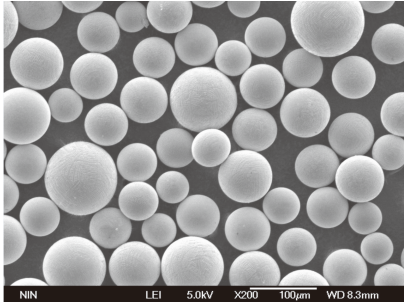
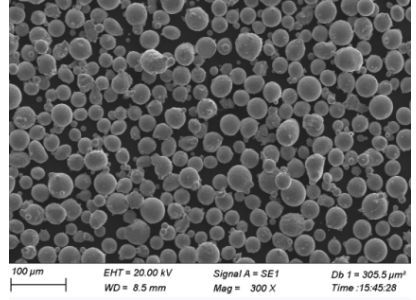

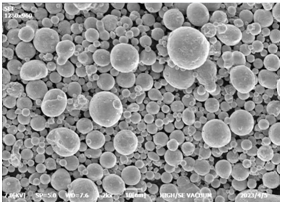

Applications de la Poudre de CoCrMoW
Où la poudre de CoCrMoW est-elle le plus souvent utilisée ? Examinons ses principales applications dans différentes industries.
| L'industrie | application | Pourquoi CoCrMoW ? |
|---|---|---|
| Implants médicaux | Remplacement de la hanche et du genou, implants dentaires | Biocompatibilité, résistance à l'usure, résistance à la corrosion |
| Aérospatiale | Composants de moteurs à réaction, aubes de turbine | Résistance aux hautes températures, durabilité |
| Automobile | Pièces de moteur à haute performance, engrenages | Résistance à l'usure, haute résistance mécanique |
| Pétrole et gaz | Outils de forage, sièges de soupape, pompes | Résistance à la corrosion, capacité à supporter des pressions extrêmes |
| Production d'électricité | Composants de turbines, échangeurs de chaleur | Résistance à la chaleur élevée, fiabilité dans des conditions difficiles |
| Marine | Arbres d'hélices, composants de pompes | Résistance à la corrosion en milieu salin |
Les 10 meilleurs modèles de poudres CoCrMoW
Entrons dans les détails de certains modèles de poudres de CoCrMoW disponibles sur le marché. Chacun d'entre eux présente un ensemble de caractéristiques uniques adaptées à des applications spécifiques.
1. Praxair CoCrMoW P231
Une poudre de haute qualité conçue pour les revêtements par projection thermique et la fabrication additive. Elle offre une excellente résistance à la corrosion et à l'usure, ce qui la rend idéale pour les aubes de turbines et les composants de moteurs à réaction.
2. Technologie Carpenter CoCrMoW A2000
Cette poudre est largement utilisée dans les implants médicaux en raison de sa biocompatibilité élevée. Elle est connue pour conserver sa résistance mécanique et sa résistance à la corrosion, même après une exposition prolongée aux fluides corporels.
3. Höganäs CoCrMoW 1250
Spécialement conçu pour les procédés de fabrication additive par fusion sur lit de poudre. Ce modèle offre une soudabilité exceptionnelle et permet de produire des pièces avec des finitions de surface élevées.
4. ATI CoCrMoW Superalloy 21
Variante de CoCrMoW à teneur accrue en tungstène, ce qui en fait un choix idéal pour les composants soumis à des températures extrêmes dans les applications aérospatiales.
5. Sandvik Osprey CoCrMoW 4502
Développée pour le moulage par injection de métaux, cette poudre offre d'excellentes caractéristiques d'écoulement et permet de créer des composants aux propriétés mécaniques supérieures.
6. Arcam EBM CoCrMoW 4110
Utilisée principalement dans les processus de fusion par faisceau d'électrons (EBM), cette poudre permet d'obtenir des pièces très résistantes avec des géométries complexes, ce qui la rend idéale pour les implants médicaux et les applications dentaires.
7. Heraeus CoCrMoW BioPowder X500
Connue pour sa biocompatibilité supérieure, cette poudre est principalement utilisée pour l'impression 3D d'implants orthopédiques. Elle résiste exceptionnellement bien à l'usure et à la corrosion.
8. SLM Solutions CoCrMoW 2311
Conçue pour les processus de fusion sélective par laser (SLM), cette poudre présente une structure granulaire fine qui permet de réaliser des pièces de haute précision aux géométries complexes.
9. EOS CoCrMoW SP2035
Cette poudre est optimisée pour les technologies de fusion sur lit de poudre basées sur le laser. Elle présente une densité et une finition de surface excellentes, ce qui la rend appropriée pour les composants mécaniques de haute performance.
10. Renishaw CoCrMoW Plus
Connue pour son point de fusion élevé et sa résistance à l'usure et à la corrosion, cette poudre est idéale pour les environnements soumis à de fortes contraintes, tels que les industries aérospatiale et automobile.
Avantages de la poudre de CoCrMoW
Pourquoi devriez-vous considérer la poudre CoCrMoW pour votre prochain projet ? Voici quelques avantages remarquables :
- Résistance supérieure à l'usure : Comparé à d'autres poudres métalliques comme le titane ou l'aluminium, le CoCrMoW est beaucoup plus résistant à l'usure, ce qui le rend idéal pour les applications à fort impact.
- Résistance à la corrosion : La teneur élevée en chrome offre une excellente protection contre la corrosion, en particulier dans les environnements marins et chimiques.
- Stabilité de la température : Les alliages CoCrMoW peuvent résister à des températures extrêmes sans perdre leur résistance, contrairement à d'autres alliages qui peuvent se ramollir ou se dégrader.
- La polyvalence dans la fabrication : Qu'elle soit utilisée pour le moulage par injection de métal ou l'impression 3D, la poudre CoCrMoW offre une excellente adaptabilité.
Inconvénients de la Poudre de CoCrMoW
Bien que la poudre de CoCrMoW possède des propriétés impressionnantes, il y a quelques limitations à prendre en compte :
- Coût : La poudre de CoCrMoW peut être plus chère que d'autres poudres d'alliage comme l'acier inoxydable ou le titane.
- Difficulté de traitement : Certains procédés de fabrication peuvent nécessiter des équipements ou des techniques spécialisés pour traiter le point de fusion élevé du CoCrMoW.
- Ductilité limitée : Bien que solides et résistants à l'usure, les alliages CoCrMoW peuvent être moins ductiles, ce qui peut limiter leur utilisation dans des applications nécessitant de la flexibilité.
Spécifications, tailles, qualités et normes
Examinons les spécifications, les tailles et les normes typiques de la poudre de CoCrMoW :
| Spécifications | Détails |
|---|---|
| Gamme de taille des particules | 15-45 μm (fabrication additive), 45-106 μm (pulvérisation thermique) |
| Densité | 8.3-8,5 g/cm³ |
| Point de fusion | 1330-1450°C |
| Normes ASTM | F75, F1537, F799 (pour les applications médicales) |
| Normes ISO | 5832-4, 5832-12 (pour la biocompatibilité) |
Fournisseurs et prix de la poudre de CoCrMoW
Voici un tableau énumérant quelques-uns des principaux fournisseurs de poudre de CoCrMoW, ainsi que les prix approximatifs :
| Fournisseur | Modèle | Prix (par kg) | Disponibilité |
|---|---|---|---|
| Praxair | CoCrMoW P231 | $200-250 | Dans le monde entier |
| Technologie des charpentiers | A2000 | $300-350 | Amérique du Nord, Europe |
| Höganäs | CoCrMoW 1250 | $180-220 | Mondial |
| ATI | Superalliage 21 | $250-300 | Amérique du Nord, Asie |
| Sandvik Osprey | CoCrMoW 4502 | $220-270 | Europe, Asie |
Avantages et inconvénients de la poudre CoCrMoW par rapport à d'autres poudres
| Comparaison | Poudre de CoCrMoW | Poudre de titane | Poudre d'acier inoxydable |
|---|---|---|---|
| Résistance à l'usure | Mieux | Moins | Modéré |
| Résistance à la corrosion | Excellent | Très bon | Bon |
| Résistance à la température | Mieux | Modéré | Bon |
| Coût | Plus élevé | Modéré | Plus bas |
| Biocompatibilité | Excellent | Bon | Modéré |

FAQ
| Question | Réponse |
|---|---|
| À quoi sert la poudre de CoCrMoW ? | La poudre de CoCrMoW est utilisée dans les implants médicaux, les pièces aérospatiales, les composants automobiles, etc. |
| Comment le CoCrMoW se compare-t-il au titane ? | Le CoCrMoW offre une meilleure résistance à l'usure et une meilleure stabilité thermique, mais il est plus cher. |
| Le CoCrMoW est-il biocompatible ? | Oui, les alliages CoCrMoW sont biocompatibles et sont couramment utilisés dans les implants médicaux. |
| Le CoCrMoW peut-il être utilisé dans l'impression 3D ? | Absolument ! Il est largement utilisé dans la fabrication additive pour produire des pièces de haute performance. |
| Quelles sont les limites de CoCrMoW ? | Il peut être coûteux et difficile à mettre en œuvre dans certaines techniques de fabrication. |

